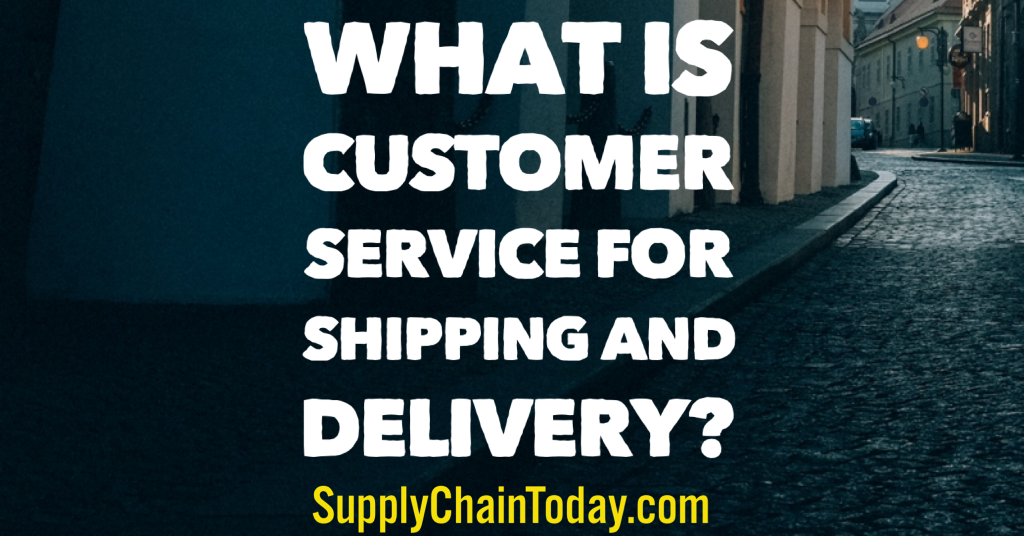What is Customer Service for Shipping and Delivery?
Customer service for shipping and delivery refers to the assistance and support provided to customers during the process of shipping and receiving goods. This can include answering questions about the status of an order, providing tracking information, resolving problems or issues with an order, and handling returns or exchanges. Customer service for shipping and delivery is an important aspect of the overall customer experience, as it can impact the customer’s satisfaction with the company and their likelihood to make future purchases.
Effective customer service for shipping and delivery involves providing timely and accurate information, being responsive to customer inquiries and concerns, and being proactive in identifying and addressing potential issues. It may also involve offering various shipping and delivery options to meet the needs of different customers, such as express or same-day delivery, or the option to pick up an order at a store or other location.
Overall, the goal of customer service for shipping and delivery is to ensure that customers receive their orders in a timely and satisfactory manner, and to provide a high level of support and assistance throughout the process.
Pros and Cons for Shipping and Delivery
There are both benefits and potential challenges associated with customer service for shipping and delivery. Here are some pros and cons to consider:
Pros:
- Improved customer satisfaction: By providing timely and accurate information and addressing customer inquiries and concerns in a timely and efficient manner, customer service for shipping and delivery can enhance the customer’s satisfaction with the company.
- Increased customer loyalty: Providing excellent customer service for shipping and delivery can lead to increased customer loyalty and repeat business.
- Positive reputation: Companies with a reputation for excellent customer service for shipping and delivery are more likely to attract new customers and build a positive reputation in the marketplace.
Cons:
- Cost: Providing high-quality customer service for shipping and delivery can be resource-intensive, and may require the hiring and training of additional staff.
- Complexity: Managing customer inquiries and concerns can be complex, particularly for companies with a large volume of orders or a wide range of products and services.
- Risk of errors or mistakes: Handling customer inquiries and concerns can involve a variety of tasks and processes, which can increase the risk of errors or mistakes.
- Customer expectations: Customers may have high expectations for customer service for shipping and delivery, and may be disappointed if their expectations are not met.
Cost Savings: Shipping and Delivery.
There are several ways that companies can save money on shipping and delivery:
- Optimizing routes and schedules: By choosing the most efficient routes and schedules, a company can reduce the distance traveled and the time required to complete a trip, which can save money on transportation costs.
- Consolidating shipments: Combining multiple shipments into a single load can reduce the number of trips and lower transportation costs.
- Leveraging technology: Using technology such as transportation management systems (TMS) and GPS tracking can help to optimize routes and improve efficiency, which can reduce costs.
- Partnering with other companies: Collaborating with other companies or organizations can help to share the costs and benefits of shipping and delivery. For example, companies can join forces to fill empty or partially empty trucks (a practice known as “backhauling”), or they can work together to negotiate better rates with carriers.
- Using intermodal containers: Intermodal containers, which can be transferred between different modes of transportation without being unloaded, can reduce handling and loading costs and improve efficiency.
- Optimizing warehouse and inventory management: Streamlining warehouse and inventory management can help to reduce lead times and improve the efficiency of the supply chain as a whole.
By implementing these strategies, a company can save money on shipping and delivery and improve the efficiency of its supply chain operations.
Train by Primary SCM Process
- Plan it: What is Supply Chain Planning and Strategy?
- Buy it: What is Supplier Management and Procurement?
- Store it: What is Distribution, Warehouse and Inventory Management?
- Make it: What is Manufacturing?
- Ship it: What is Transportation, Logistics and Shipping?
- Return it: What is Return and Reverse Logistics?
